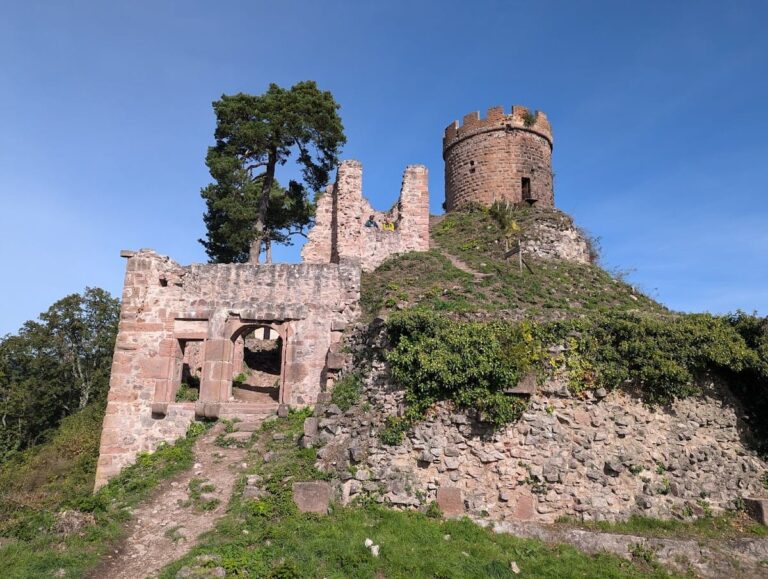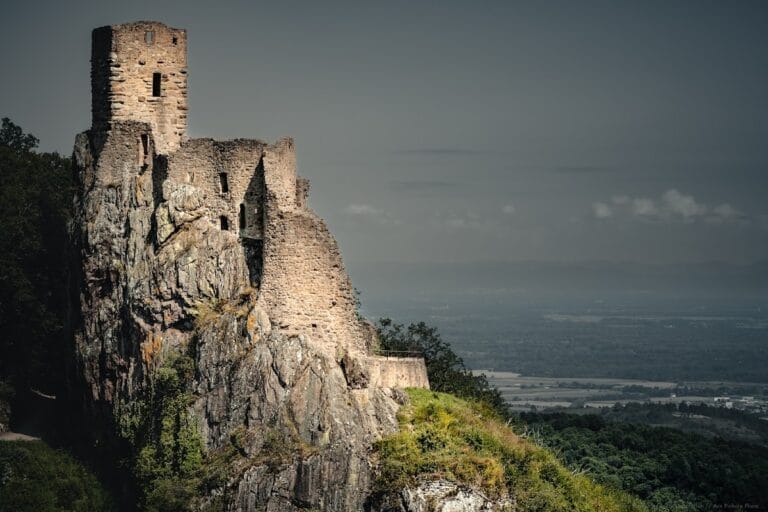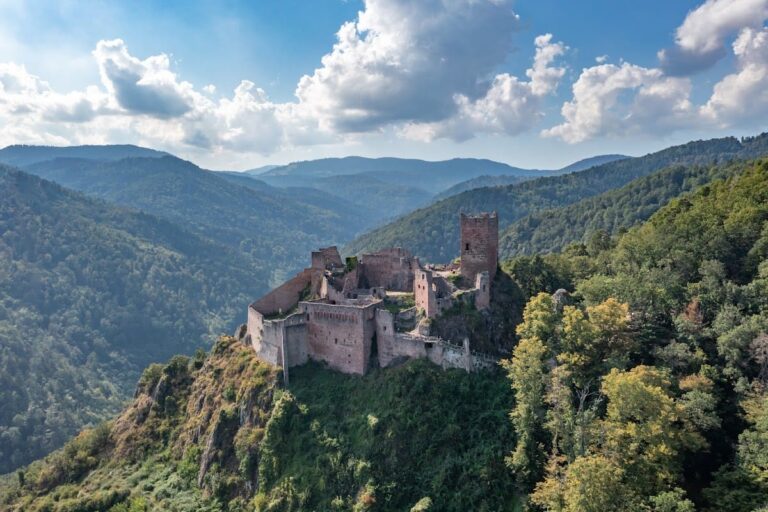Château d’Œdenbourg: A Medieval Hill Castle Near Orschwiller, France
Visitor Information
Google Rating: 4.5
Popularity: Low
Google Maps: View on Google Maps
Official Website: visitgrandest.com
Country: France
Civilization: Medieval European
Remains: Military
History
Château d’Œdenbourg is a ruined hill castle situated near Orschwiller in modern-day France. It was constructed during the medieval period by the local nobility and forms part of a larger cluster of fortifications that includes the better-known Haut-Koenigsbourg castle.
The site of Château d’Œdenbourg was first recorded in 1147 under the name Estuphin, a term likely influenced by Roman naming conventions. By 1187, the area was referred to as Kunigesberg or Königsburg, names which originally applied to the entire fortified complex comprising both the current ruins of Œdenbourg and Haut-Koenigsbourg. This illustrates that the two castles were once considered a single defensive site or estate. The castle itself was built during the 13th century, with evidence showing that its central keep was erected early in the century, while other parts followed later.
Ownership of the estate in 1267 likely belonged to the Rathsamhausen family, a noble lineage known from regional records. Archaeological finds, such as tiles used for heating stoves dated to the early 1400s, indicate that Château d’Œdenbourg remained inhabited until shortly after this period. Documentation from 1417 refers to the castle as Œdenbourg, derived from an older local term meaning “the abandoned castle,” confirming that the fortress fell out of use during the early 15th century. After around 1420, no new items have been found at the site, reinforcing the conclusion that it was deserted.
Despite its abandonment, the ruins gained renewed strategic attention in 1504. Records show that the site was recognized as a valuable artillery position by Albrecht von Berwangen and was subsequently used by soldiers stationed at Haut-Koenigsbourg to secure the surrounding territory from an elevated vantage point.
Protection of Château d’Œdenbourg as a historic monument began in the 20th century and continues today through official listings that preserve its remains as part of France’s cultural heritage.
Remains
The ruins of Château d’Œdenbourg reveal a fortified layout typical of the late Staufer period, constructed predominantly from large blocks of stone featuring a roughened surface known as bossage, or Buckelquadern in German. This technique provided both strength and a distinctive texture to the masonry. One of the most prominent structural elements is a thick shield wall on the eastern side, designed at a slight angle facing towards the neighboring Haut-Koenigsbourg. This wall, noticeably higher and more massive than the others, served as the main defensive barrier protecting the inner parts of the castle.
Close to this shield wall is the remains of a rectangular residential building called a palas, identifiable by its Gothic-style window openings, allowing light into the living quarters while adhering to medieval architectural fashions. Its elongated form suggests it was an important domestic space within the fortress.
At the highest western point of the rocky hill stands the stump of an older bergfried—a type of square-shaped keep that also functioned as a fortified tower residence. This structure is distinguished by its robust dimensions, intended as a last refuge during attacks and providing a commanding view over the surroundings.
Surrounding the core castle are several defensive ditches and ramparts, particularly on the east and west approaches, emphasizing the strategic effort to safeguard access paths. These earthworks encircle the hilltop, marking an extensive fortified complex comparable in scale to its famous neighbor, Haut-Koenigsbourg.
Archaeological discoveries at the site include stove tiles from the early 15th century, confirming continued occupation until just before the castle’s abandonment. The elevated location allowed for surveillance across the Villé and Argent valleys to the northwest and southwest, with partial views extending over the Rhine plain to the east. However, views to the east were partly hindered by the rock formation supporting Haut-Koenigsbourg, indicating the castles’ complementary roles in regional defense.










